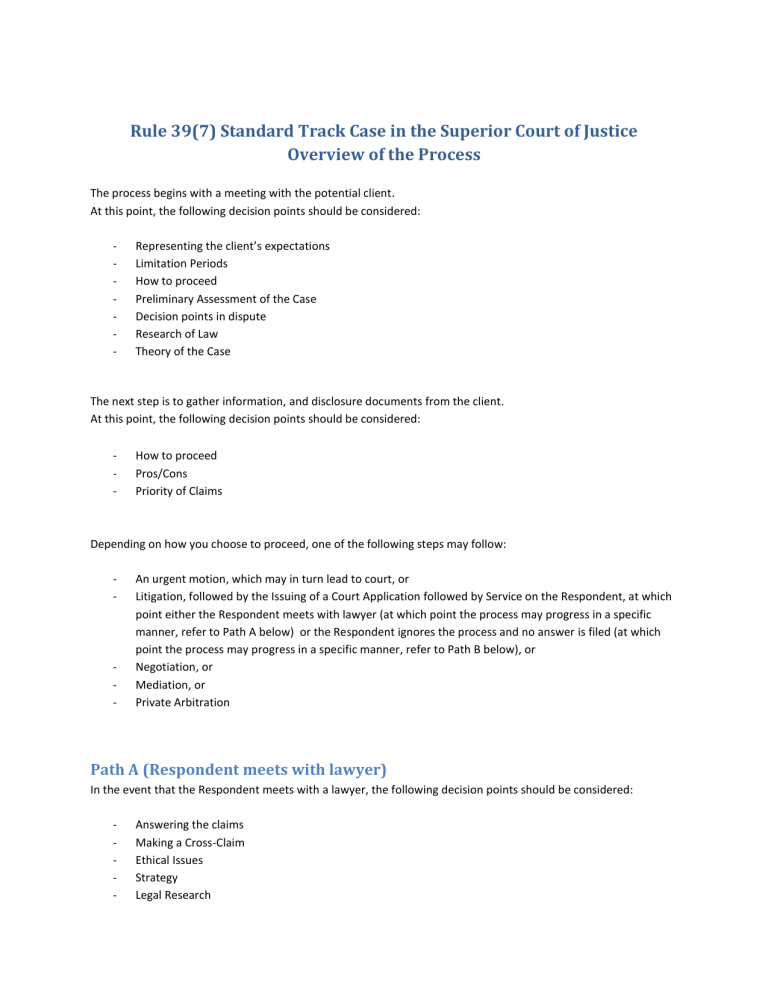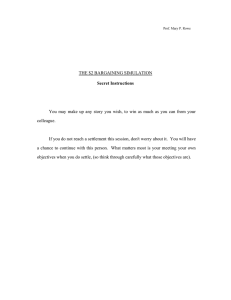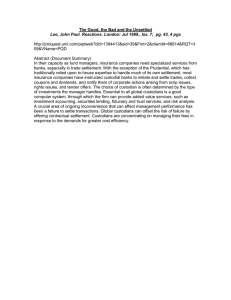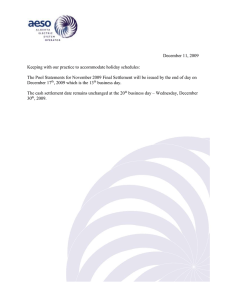
Rule 39(7) Standard Track Case in the Superior Court of Justice Overview of the Process The process begins with a meeting with the potential client. At this point, the following decision points should be considered: - Representing the client’s expectations Limitation Periods How to proceed Preliminary Assessment of the Case Decision points in dispute Research of Law Theory of the Case The next step is to gather information, and disclosure documents from the client. At this point, the following decision points should be considered: - How to proceed Pros/Cons Priority of Claims Depending on how you choose to proceed, one of the following steps may follow: - - An urgent motion, which may in turn lead to court, or Litigation, followed by the Issuing of a Court Application followed by Service on the Respondent, at which point either the Respondent meets with lawyer (at which point the process may progress in a specific manner, refer to Path A below) or the Respondent ignores the process and no answer is filed (at which point the process may progress in a specific manner, refer to Path B below), or Negotiation, or Mediation, or Private Arbitration Path A (Respondent meets with lawyer) In the event that the Respondent meets with a lawyer, the following decision points should be considered: - Answering the claims Making a Cross-Claim Ethical Issues Strategy Legal Research Retainer After these decision points are given due consideration, then the Respondent files answers and claim. After this, the next step is to provide and receive disclosure. At this point, the following decision points should be considered: - Is disclosure adequate? Bring Motion or Disclosure? Need experts? Custody Access Assessment Appoint Lawyer for Children Adjust theory of the case Depending upon the nature of the decision points, the next step may be Form 14B motion for disclosure, or proceedings may move directly to a Case Conference. At the time of the Case Conference, the following decision points should be considered: - Settle some of the issues? Adequate information? Need expert advice on some issues? Keep client advised of costs of fees and disbursements Next Steps Consequences of “No Deal” Depending on the nature of these decision points, a Partial or complete settlement may be reached, followed by either a Separation Agreement or a Consent Court Order. If a partial or complete settlement is not reached, then following the Case Conference, the following decision points must be considered: - Should motion be brought? What relief? Prepare offer to settle motion? Appointment of experts? Lawyer for children? The next step will be a Motion for Interim relief. At this point, the following decision points must be considered: - How to conduct discovery Written questions or orally? Gathering documents/ Requesting documents Request to admit The next step is Discovery: Questioning of the parties under oath. At this point, the following decision points must be considered: - Offer to settle – on what terms? Legal and non-legal reasons to settle Serve notices under Evidence Act Issue expert reports Finalize theory of your case The next step is the Settlement Conference. As with the Case Conference, at this point, the following decision points must be considered: - Settle some of the issues? Adequate information? Need expert advice on some issues? Keep client advised of costs of fees and disbursements Next Steps Consequences of “No Deal” Depending on the nature of these decision points, a partial or complete settlement may be reached, followed by either a Separation Agreement or a Consent Court Order. If a partial or complete settlement is not reached, then following the Settlement Conference, the following decision points must be considered: - Interviewing witnesses in preparation for hearing Revise offer to settle? Consider other side’s offer to settle? Memo of legal issues Client’s own priorities? Alternatives to no deal Efficient ways of reducing trial time The next step will be a Trial Management Conference. As with the Case Conference, and the Settlement Conference, at this point, the following decision points must be considered: - Settle some of the issues? Adequate information? Need expert advice on some issues? Keep client advised of costs of fees and disbursements Next Steps Consequences of “No Deal” Depending on the nature of these decision points, a partial or complete settlement may be reached, followed by either a Separation Agreement or a Consent Court Order. If a partial or complete settlement is not reached, then following the Trial Management Conference, the following decision points must be considered: - Trial preparation Meeting with Witnesses Changing offer to settle Settlement of some issues Agreed statements of fact Opening statement Expert input re: children Order of calling of witnesses, etc. The next step will be a Trial and following the trial, a Final Order. Path B (Respondent ignores the process and no answer is filed) In the event that Respondent ignores the process and no answer is filed, then the next step is an uncontested summary hearing, involving either viva voce evidence or affidavit evidence. This is followed by a Final Order.





